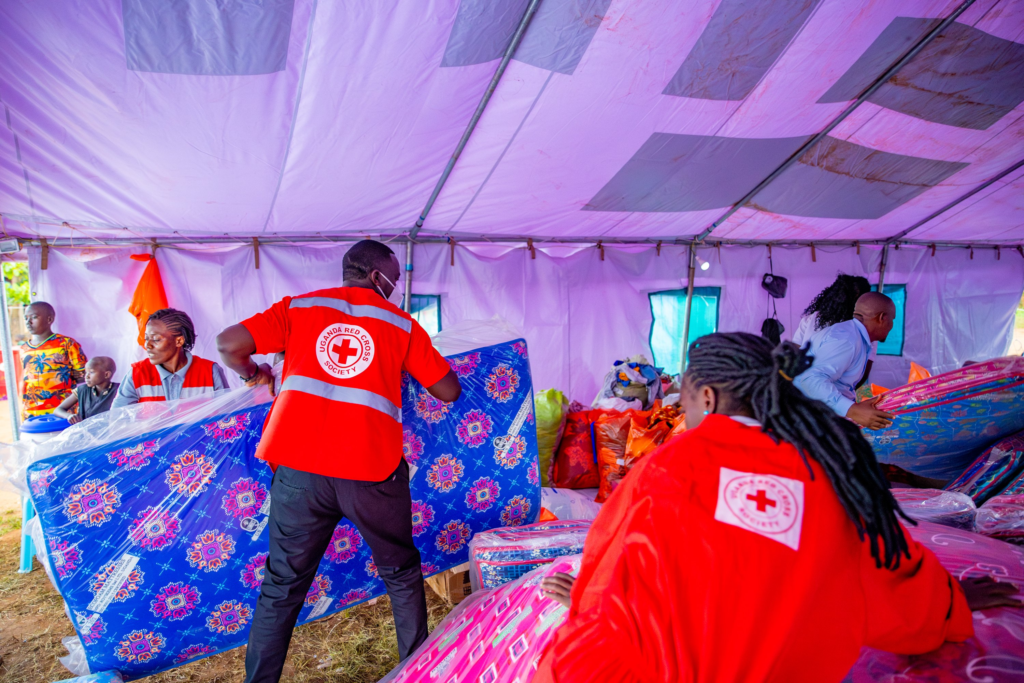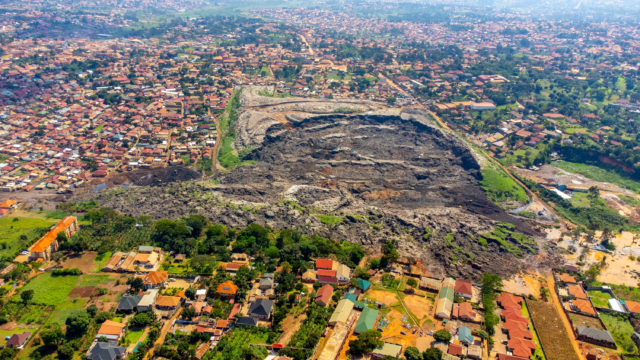
The Kampala Capital City Authority has provided this detailed statement in response to the disastrous waste slide at the Kiteezi Landfill. We are deeply saddened by the loss of lives and the injuries caused to residents and the loss of property.
It is estimated that forty-four homes were affected. By Saturday 17th August 2024, 35 bodies had been recovered, and eighteen persons had been rescued. The emergency Response Centre at Kiteezi has to date received approx. 352 people.
Response to the Waste Slide Incident
On 10th August 2024, the day of the waste slide, emergency services were dispatched promptly, and efforts were coordinated with relevant ministries, departments, and agencies to provide relief and mitigate further risks.
The priority has been to protect human life and manage the aftermath of the incident as effectively as possible. KCCA appreciates the outpouring of support to the community by Kampala residents. His Excellency the President has provided condolences package of Ug.5,000,000 to each bereaved family as well as Ug. Shs.1,000,000/= for each survivor.
The Office of the Prime Minister is leading on the response to the disaster and has provided support including food, mobilizing excavators and fuel to continue the excavation works. We are grateful to the sister Ministries and agencies for the support, and we thank all our teams at the emergency response center in Kiteezi for the work they are doing.
The leaders in the Kiteezi community have been very proactive and we are grateful for the facility offered at Church of Uganda, Kiteezi Primary School to accommodate the displaced.
It is essential that KCCA explains the various actions that have led to this incident over time to enable the public to appreciate the challenges of waste management. The situation at Kiteezi landfill has been shaped by numerous external factors beyond KCCA’s direct control dating back to 2013.
KCCA has made efforts within the constraints imposed by these external factors to protect public safety as we explained here below. This is not an attempt to apportion blame but rather to bring to light the constraints faced in the management of Kiteezi
1. Kiteezi landfill operated beyond its capacity
The Kiteezi Landfill has been in operation for twenty-eight years as the primary waste disposal site for Kampala City, since 1996. By 2013, the National Environmental Management Authority (NEMA), declined to renew the landfill’s operating license saying that it had reached its full capacity. However, the landfill use was continued since there was no alternative waste disposal. This was necessary otherwise there would be citywide public health crisis arising from unmanaged waste accumulation in the city. As such, since 2013 to date, Kiteezi has been operating in crisis mode.
Kampala city generates beyond 2,500 tons of garbage each day. There are over 170 trucks delivering garbage to Kiteezi each day from every home, school, trading space, and market. The waste generation per capita is estimated at half a kilogram per day per person. The landfill also serves three administrative areas, Kampala, Wakiso and parts of Mukono. During financial year 2023-2024, a total of approx. 400,000 tons of garbage was deposited at Kiteezi. The site capacity was extremely stretched.
2. Inadequate Funding
KCCA commenced the Kiteezi landfill decommissioning journey in 2014 by working with the International Finance Corporation IFC, of the world bank. They provided technical support for the Kampala Solid waste management project. As part of implementation of this plan, KCCA acquired 135 acres of land in Ddundu Mukono to establish a new landfill and thereby decommission Kiteezi. However, the residents of Ddundu, rose up in strong opposition to that plan and foiled the peaceful relocation to Ddundu.
Again, Kiteezi continued in operation despite its adjudged inability to accommodate more garbage which stretched it further. But there was no alternative site and there was no budget provision for a new site. By 2020, the budget for decommissioning was indicated as UGX36 Billion which would include the cost of resettling the 600 waste pickers who derive their livelihood from garbage picking.
KCCA included this money in the budget framework paper but it was reflected it as unfunded priority in the budget appropriation. In the subsequent years thereafter, the request for solid waste management was listed as unfunded priorities, in FY 20/21, FY 21/22, and FY 24/25. In January 2024, KCCA appeared before the Parliamentary Committee to brief the budget committee for the solid waste management planned works. The request included purchase of additional land in the area of Kiteezi and compensation of project affected persons.
Several potential investors have come to KCCA, through unsolicited proposals but they want sovereign guarantees and mandatory upfront infrastructure development which KCCA can’t provide due to lack of funding. KCCA has had investor expression of interest from Germany, India and China.
The lack of funding meant that KCCA could not move forward with the planned decommissioning of Kiteezi and neither could KCCA buy alternative land. Meanwhile the garbage continued to pile up into a garbage mountain. Failure to decommission means compressing the garbage to decrease its looming piles. The funding provided each year caters for Kiteezi management, garbage transportation costs, city cleaners and incidentals.
3. Population Growth and Increased Waste Production
The city of Kampala has seen significant population growth over the past decade, a factor that directly contributed to increased waste production. This exponential growth placed unprecedented pressure on the Kiteezi Landfill. Originally designed to serve a much smaller population. In 1996, the Kampala City population was 1,013,000 people. In 2024 the day population has doubled to 2,503,174 (UBOS) people and yet the solid waste management budget remained stagnant.
The geographical area of the landfill is 39 Acres. The buffer zone created around the periphery has over the years been encroached upon. Consequently, waste has been stacked vertically, a practice that introduced new risks of unstable slopes and excessive waste heights. KCCA technical team, continuously monitored the landfill’s condition and implemented all feasible safety measures.
4. The 500m Buffer Zone
The National Physical Planning Standards require a 500-meter buffer zone around landfills to mitigate risks to surrounding communities. Kasangati Town Council’s zoning laws prohibit encroachments but still the buffer zone was encroached upon. These developments are in Kasangati Town Council and involve private landowners and developers. The association of waste pickers which gathers 600 waste pickers on the garbage pile have had engagements with the KCCA solid waste management team to sensitize them on the dangers of living near the garbage.
5. Risk Mitigation
When the alert of developing cracks was made on 2nd July 2024, KCCA immediately prioritized the safety of the community by focusing on budget-neutral interventions. KCCA solid waste management team met with the key leaders of the community and conducted a public awareness campaign to inform the waste pickers and nearby residents of the potential dangers associated with the landfill. KCCA issued warnings and advisories, urging residents to take precautions.
On 8th July 2024, the community of the Kiteezi landfill salvagers were sensitized to avoid working in risky areas and the on the slopes of the landfill which had developed cracks. The Local Council leadership and the security forces in the area were equally informed of the situation. These actions were aimed at minimizing the risks posed by the continued operation of the landfill. A comprehensive mechanized response to the developing cracks necessitated a detailed outlay of the interventions and the attendant costs to be prepared by the experts.
The current rains have played a part in the disintegration of the garbage. The incident fundamentally affected the households which were dwelling near the edges of the garbage piles up to approx.150 Meters on the lower slides. The leachate plant on the lower sides of the slope was also submerged.
Conclusion
In conclusion, KCCA affirms that the sad incident of the waste slide at Kiteezi Landfill was a culmination of continuing external constraints. KCCA did not neglect its duty of care and endeavored to exercise its mandate within the budget constraints. The external constraints include inadequate funding, the inability to decommission the landfill and relocate operations, the challenges posed by rapid population growth, and the encroachment of residential developments within the designated buffer zone.
At every stage, KCCA has acted with due diligence, making decisions aimed at minimizing risk within the severe limitations imposed by these external factors and notifying the supervising authorities of the dangers related to the delay of decommissioning. The precautions taken in informing the community leadership and the waste pickers saved lives.
KCCA remains committed to public safety and responsible management and remains dedicated to ensuring that future waste management strategies in Kampala are robust moving to the new technologies of converting waste to usable forms of energy and other uses.
We continue to grieve the loss of lives in our community and to nurse the victims. Thank you for the feedback through the various forums. We reiterate our commitment to building a vibrant attractive and sustainable city in the pearl of Africa.” Said KCCA in a statement posted on X on Tuesday August 20th 2024.






